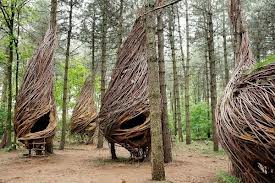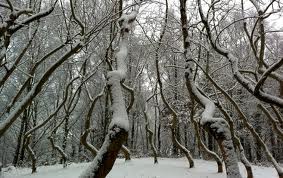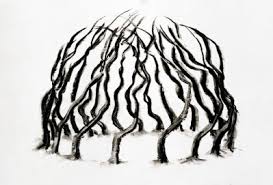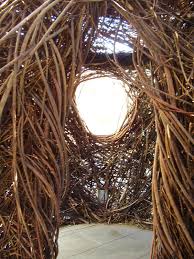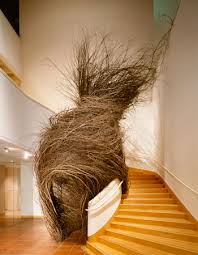Living Tree Sculptures
January 7, 2014
Photo: Will Beckers, The Willowman’s Hamlet, The Netherlands
The winter season is an ideal time to create living tree sculptures from either willow branches or a variety of tree saplings. Willow dens are perhaps the most common living tree sculpture, and are easily created as a result of planting and shaping cut willow branches. Willow re-grows from both branch cuttings and from the trunks of the pruned trees. Willow dens are ideal hideaways for both children and adults. They can also act as trellises for a variety of climbers (i.e. honeysuckle, jasmine and thornless blackberry), and the base of the den can be planted with either wild flowers or cottage garden flowers offering both scent and colour. Tree sculptures are a habitat for people, insects and birds. They can be created by many hands working together to weave narrow branches into fairy tale shapes that feed the imaginations, while creating sanctuary for the mind and body.
Young sapling trees can be easily twisted and trained to grow together, simply by tying branches together, or cutting and binding branches to form a desired shape. Yearly pruning maintains the shape of the sculpture, which can simply be a circle of trees growing and entwining together. An entrance leading to the interior of the tree retreat can be accessed through crawling, or stepped into a more elaborately designed opening.
Photos: David Nash, The Ash Dome
British artist David Nash has produced an Ash Dome as a result of many years of shaping and pruning. Nash planted 22 saplings in 1977 and subsequently worked to train the trees into a circular and intertwining sculpted dome located in Wales.
Photos: Patrick Doughtery, Stick Work
American land artist Patrick Doughtery’s artwork is an striking example of the potential of woven branches to create large scale sculptures that are symbolic of large nests, cocoon and lairs.
The sculptures ultimately decompose creating an ideal hibernating place for mammals and insects, and ultimately the sculptures return nutrients back to the soil. The ephemeral nature of these art forms, portray the passage of time, and within their convoluted passageways we find opportunities to spend time with ourselves.
References
Tricks with Trees by Ivan Hicks
Living Willow Sculpture by Jon Warnes
